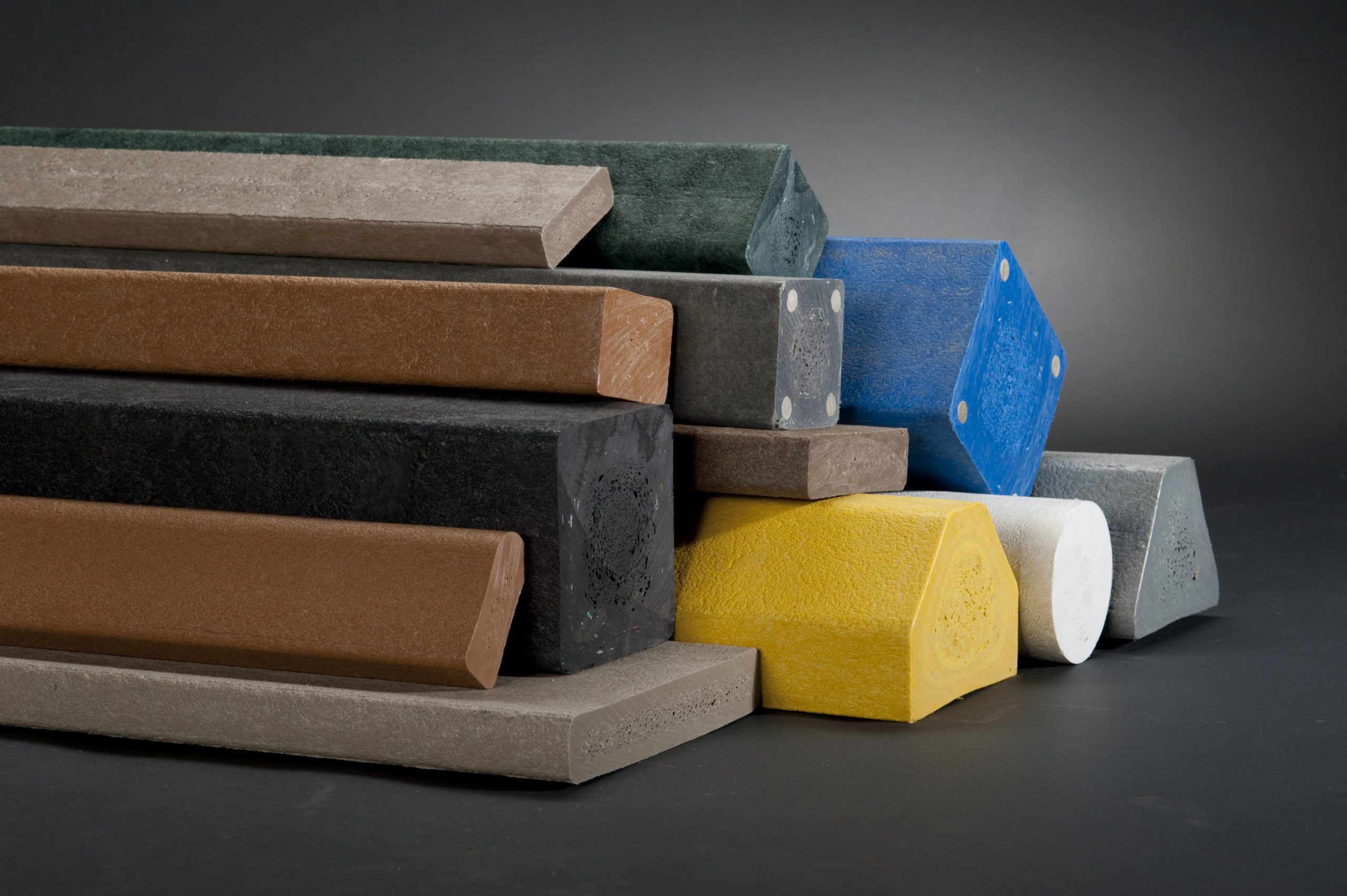Composites: Solid and Resistant Building And Construction Products
Composites: Solid and Resistant Building And Construction Products
Blog Article
Opening the Environmental Benefits of Recycled Composites in Building and Design
In the realm of building and layout, the utilization of recycled composites holds substantial guarantee for enhancing sustainability techniques and minimizing ecological impact (composites). By integrating these innovative materials, there is a potential to deal with vital concerns such as waste reduction, power preservation, and a reduction in carbon impact. The shift towards an extra lasting future in these markets depends upon unlocking the full possibility of recycled compounds. This conversation will check out the complex advantages and challenges related to incorporating recycled composites into building and construction and design, using a glance right into the transformative opportunities that exist in advance.

Ecological Impact Decrease
The reduction of environmental effect via using recycled composites in building and construction and design plays a crucial duty in sustainable practices. By integrating recycled compounds into structure products, the building industry can significantly decrease its carbon footprint and contribute to an extra green future. These lasting materials, made from repurposed plastics, timber fibers, or other recycled components, use a feasible option to traditional building and construction materials without endangering on high quality or sturdiness.
Recycled compounds assist draw away waste from garbage dumps and reduce the requirement for extracting basic materials, hence saving natural deposits. Additionally, the production procedure of these composites frequently eats less power and sends out less greenhouse gases compared to generating virgin materials (composites). This change towards utilizing recycled compounds not only decreases environmental injury but likewise promotes a circular economic situation by encouraging the reuse of products that would certainly otherwise be thrown out
Waste Minimization
With a concentrate on minimizing waste in building and construction and design, the assimilation of recycled composites supplies a sustainable remedy to reduce environmental influence. Waste reduction is an essential aspect of lasting techniques, and making use of recycled composites provides a possibility to achieve this goal properly. By using products that have already offered their initial purpose, such as recycled plastics or recovered wood fibers, the building and layout industries can substantially decrease the quantity of waste generated and sent to garbage dumps.
Recycled compounds have the possible to divert significant quantities of waste from conventional disposal methods, adding to an extra round economic climate where resources are made use of successfully. In addition, the manufacturing procedure of recycled compounds often takes in less energy and creates fewer discharges compared to virgin materials, better lowering the ecological impact of construction and design projects.
Implementing waste minimization techniques with the unification of recycled compounds not just assists in conserving natural deposits but also advertises a more sustainable method to structure and making for a greener future.
Power Conservation
Integrating recycled composites not only minimizes waste in building and construction and style but also plays a crucial role in boosting energy conservation methods within the market. The usage of recycled composites in building and construction can dramatically add to energy conservation through different means. The production of virgin products typically requires significant energy inputs, whereas utilizing recycled compounds eats much less power, thereby reducing general energy consumption. Additionally, incorporating recycled compounds can contribute to far better insulation buildings in structures, reducing the demand for extreme heating or cooling, and subsequently lowering power use for climate control. Additionally, the light-weight nature of lots of recycled composites can bring about lighter structures, needing much less energy for transport and installment. By advertising making use of recycled compounds in building and design, the market can make considerable strides in the direction of accomplishing energy efficiency and minimizing its carbon footprint, inevitably adding to a more lasting built environment.
Carbon Impact Reduction
Enhancing sustainability methods with the utilization of recycled compounds in building and construction and layout significantly reduces the carbon impact of the sector. By incorporating recycled products right into the production of compounds, the demand for virgin resources lowers, leading to lower energy consumption and greenhouse gas exhausts connected with conventional production processes. This decrease in carbon impact is essential in combating climate change and promoting an extra environmentally friendly strategy to building and design.
Additionally, making use of recycled compounds also aids in diverting waste from landfills, consequently alleviating the environmental influence of disposal and promoting a round economy. The carbon footprint decrease achieved through the adoption of recycled composites aligns with the global push in the direction of sustainable techniques and the reduction of industrial discharges. It showcases a dedication to liable resource management and a change towards greener alternatives in the construction and design markets. Inevitably, by prioritizing the integration of recycled composites, the industry can make considerable strides in reducing its carbon impact and adding to an extra sustainable future.
Sustainable Future
The integration of recycled compounds in building and layout not just addresses immediate environmental issues yet additionally lays a solid foundation for a sustainable future in the industry. By including recycled composites right into building products and products, the construction and design sectors can considerably decrease their dependence on virgin resources, bring about a more round economic situation. This change in the direction of sustainability is vital for alleviating the environmental influence of traditional building and construction methods, which usually result in high levels of waste generation and resource depletion.

Conclusion
In verdict, recycled compounds provide considerable ecological benefits in building and style by minimizing click resources environmental effect, lessening waste, saving energy, reducing carbon impact, and advertising a lasting future. Accepting using recycled composites can add to a much more environmentally-friendly method to building and layout, inevitably causing a more sustainable and greener future for all.
The decrease of ecological impact with the use of recycled compounds in building and style plays an essential function in lasting methods.With a focus on lessening waste in building and layout, the combination of recycled composites offers a lasting option to lower environmental effect. By promoting the find usage of recycled compounds in building and style, the sector can make considerable strides towards achieving energy effectiveness and minimizing its carbon impact, ultimately adding to a much more lasting built environment.

Report this page